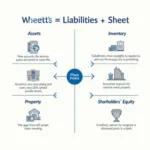Understanding the vocabulary used in the TOEIC Listening section is essential to scoring well. In this article, we’ll explore strategies and techniques to tackle TOEIC vocabulary effectively, which will not only improve your listening skills but also your TOEIC score overall.
Why Vocabulary Matters in the TOEIC Listening Section
The TOEIC Listening section is all about comprehension, and vocabulary plays a crucial role. Whether it’s grasping the meaning of specific phrases or understanding what the speaker is referring to in conversations, having a rich vocabulary allows you to pick up on context and subtle nuances. The more words you know, the less likely you’ll be caught off guard by unfamiliar terms.
But how do you effectively build and retain TOEIC vocabulary for listening? Let’s go over some strategies!
Step-by-Step Guide to Mastering TOEIC Vocabulary for Listening
-
Focus on Commonly Used Phrases and Idioms
The TOEIC Listening section often includes recurring phrases, expressions, and common business idioms. Start by learning the most commonly used ones.- Examples:
- “run a meeting” -> means managing or organizing a meeting
- “take a rain check” -> means to postpone or decline an invitation
These phrases help you anticipate what the speaker is referring to, even if individual words are misunderstood.
- Examples:
-
Listen to Authentic Audio Sources
One of the best ways to improve listening vocabulary is through consistent exposure to native speakers. Podcasts, news broadcasts, or business talks in English can prove invaluable for this purpose.“By immersing yourself in real-life audio, you can become familiar with the accents, tones, and vocabulary that TOEIC uses.” — Nguyễn Thu Trang, TOEIC Expert -
Use Vocabulary Lists from Reliable TOEIC Resources
Refer to TOEIC-specific vocabulary lists that categorize words by topics commonly found in the exam, such as business terms, travel, customer service, and more. You can also create personalized flashcards to memorize vocabulary with sample sentences.Refer to our mastering TOEIC skills for guaranteed success article for more practice tips.
-
Adapt to Different Contexts
The TOEIC Listening part features diverse contexts—business meetings, airport announcements, hotel bookings, etc. Familiarizing yourself with these contexts can substantially improve how you interpret the vocabulary used.- For example, listening to flight announcements will expose you to terms like:
- “gate change”
- “boarding time”
- “delayed flight”
Create thematic word groups so the next time you face such subjects, familiar vocabulary will pop into your mind seamlessly.
- For example, listening to flight announcements will expose you to terms like:
Quick Tips for Building TOEIC Listening Vocabulary
-
Practice listening with subtitles: Whether it’s YouTube, Netflix, or special language apps, watching content with English subtitles helps you connect words with their pronunciation. Then turn off the subtitles and rewatch for better retention.
-
Repetition is key: Choose 3-5 new words or phrases and repeat them out loud or in sentences several times a day.
-
Take mock exams regularly: Incorporating mock tests helps you see which commonly used vocabulary you’re missing.
For a detailed breakdown, you can refer to our simple TOEIC tips like a pro article for other vocabulary-enhancing strategies.
Common Challenges with TOEIC Vocabulary in Listening Section
Difficulty Understanding Accents
TOEIC Listening may feature different English accents like British, American, and Australian, which can further complicate vocabulary comprehension. Here’s how to tackle it:
- Listen to varied resources: Make sure to expose yourself to different accents through podcasts, news channels from various countries, or YouTube videos to boost familiarity.
Limited Vocabulary Range
If you find yourself unable to understand large parts of conversations, it could mean you need to expand your TOEIC-related vocabulary beyond the basics.
- Start with corporate or customer service vocab: Word lists and recordings centered on meetings, travel, or customer service scenarios are most relevant for the TOEIC. Make it a point to regularly incorporate new words into your daily practice.
Quick Spoken Dialogues
It can be overwhelming when the speakers talk too fast during the TOEIC Listening section, making it harder to catch the words used.
- Work on Paraphrasing: If you didn’t catch the main vocabulary, learn to paraphrase what is being said. This way, instead of focusing on the individual unknowns, you can try to understand the gist of the sentence.
Example:
If someone says, “The meeting will be postponed until further notice,” but you only understand part of it, focus on “postponed” instead of stressing over missed words like “further notice.”
Recommended Listening Sources to Improve TOEIC Vocabulary
| Resource | Type | Description |
|---|---|---|
| TED Talks | Public speaking | Business and tech vocabulary related to common TOEIC topics |
| BBC Business News | Business English | Great for gaining knowledge on corporate and economic terminology |
| Podcasts (like NPR) | General English | Ideal for improving vocabulary in conversational and formal English |
For more on advanced preparation techniques, you might find our article on ways to boost TOEIC performance for advanced learners helpful.
Conclusion
Mastering TOEIC vocabulary, specifically for the Listening section, requires both strategy and consistency. By focusing on thematic learning, practicing with real-life audio, and repeated exposure, your ability to comprehend spoken English will improve significantly. Also, remember to customize your learning material according to the topics most prevalent in TOEIC.
Are you ready to apply these techniques and boost your TOEIC score? Don’t hesitate to practice regularly and review relevant vocabulary lists continuously.
Frequently Asked Questions (FAQ)
1. How many vocabulary words should I study for the TOEIC Listening section?
There is no set number of words, but it’s recommended to study 500-700 common TOEIC words covering business, travel, customer service, and daily conversations.
2. What are the best resources to improve TOEIC vocabulary for listening?
Use TOEIC-specific word lists, flashcard apps, podcasts like TED Talks, and reliable business news sources to focus on listening practices.
3. Should I focus more on American or British accents for TOEIC?
The TOEIC includes both British and American English, so it’s vital to be familiar with both accents. Resources from both regions will aid you in this.
4. Can I improve TOEIC vocabulary simply by reading?
Reading helps, but to tackle the Listening section, you should focus on spoken English. Listen to audio resources to help connect vocabulary with pronunciation.
5. How long will it take to improve my TOEIC listening skills?
With consistent practice and targeted TOEIC vocabulary study, most learners see significant improvements within 1-3 months.




